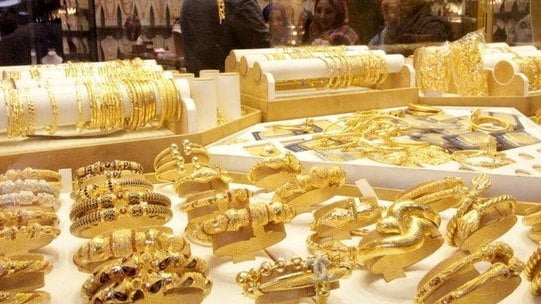What Is Hallmarking Of Gold Made Compulsory By Govt?

New Delhi: There won’t be any hanky panky when you go to buy gold next time. At long last, you can be assured of the quality of gold you are buying. In effect, you will know that you are not paying for fake metal.
With effect from June 16, the government has made it compulsory for jewellers in India to only sell gold of 14, 18 and 22 carats and gold items have to be compulsorily hallmarked. The new rule will initially cover 256 selected districts.
The government had announced in November 2019 that gold hallmarking would be compulsory from January 15, 2021. But that deadline was extended twice, first to June 1, and, then, June 16 amid the pandemic.
Hallmarking
Director-General of the Bureau of Indian Standards will lead a committee to ensure the implementation of the new rule. According to him, “hallmarking is the accurate determination and official recording of the proportionate content of precious metal in precious metal articles”.
A hallmark is an officially recognised stamp of authenticity that establishes the “purity or fineness of precious metal articles”. The key idea behind hallmarking is to protect the public against adulteration of gold by requiring that manufacturers adhere to set standards.
World Gold Council
The system dated back to the era of King Louis IX of France and Edward I of England in the 1200s, says the council. “Hallmarking gold jewellery was Europe’s earliest form of consumer protection”. The term ‘hallmark’ itself arose from the Goldsmiths’ Hall, which was the headquarters of the ‘Worshipful Company of Goldsmiths’ in London, and the marks they used to add to gold jewellery after receiving a charter from King Edward III of England in 1327.
The role of BIS
According to BIS, its ‘Hallmarking Scheme’ incorporates international criteria for certifying gold. Under the BIS scheme, registration is granted to jewellers for selling hallmarked jewellery and “BIS certified jewellers can get their jewellery hallmarked from any of the BIS recognised Assaying and Hallmarking Centres”. The BIS (Hallmarking) Regulations were implemented on June 14, 2018.
What is the proof that your jewellery is hallmarked?
“Hallmark will include a six-digit code along with BIS Mark & Purity and delivery voucher to be issued to the jeweller,” said a Union Ministry of Consumer Affairs statement.
Who will be exempted?
- Jewellers who have an annual turnover of up to Rs 40 lakh
- Jewellery headed for international exhibitions or for government-approved B2B domestic exhibitions.
- Watches, fountain pens and special types of jewellery, like Kundan, Polki and Jadau are also exempted
What about old ornaments?
- Jewellers can continue to buy back old gold jewellery without hallmark from consumer
- Old jewellery can be got hallmarked as it is, if feasible by the jeweller or after melting and making new jewellery.
When will hallmarking be done?
- At the first point of sale, “which may be manufacturer, whole-seller, distributor or retailer”.
- Gold of additional carats, that is, of 20, 23 and 24 carats will also be allowed for hallmarking.
What about penalties?
There “would be no penalties till August-end” to give adequate time to the manufacturers, wholesalers and retailers of gold jewellery to adapt to the new rule.
Know the districts where hallmarking will begin
The hallmarking scheme has been rolled out in 28 states and Union Territories that account for the 256 districts.
The full list can be found on:
https://static.pib.gov.in/WriteReadData/specificdocs/documents/2021/jun/doc202161631.pdf
According to the World Gold Council, India has around 4 lakh jewellers, of which only 35,879 are BIS certified.

Comments are closed.